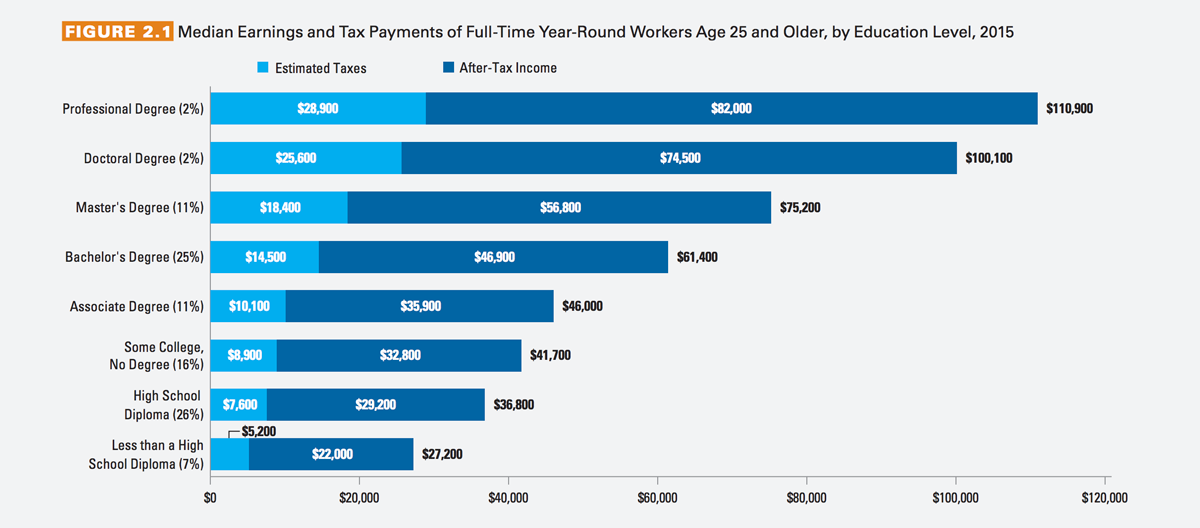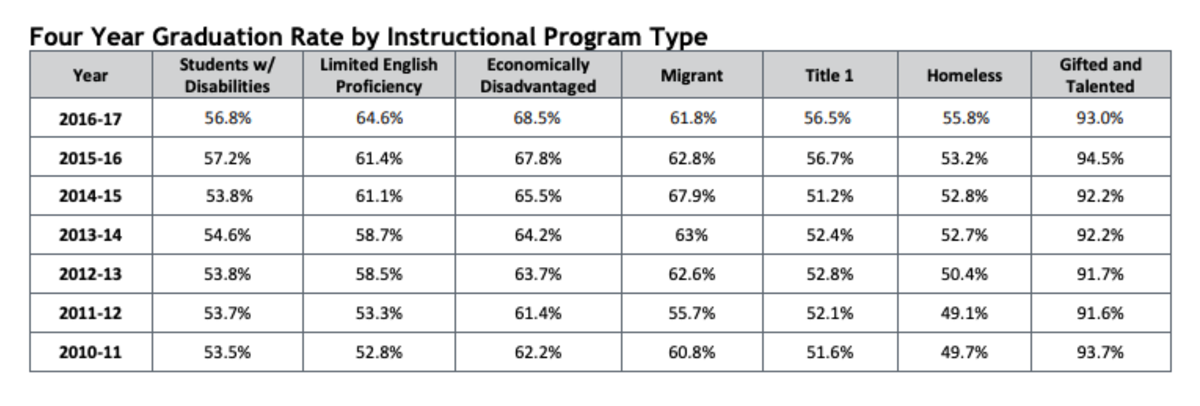 Politics today has polarized Coloradans, yet most of us agree that every child should have the opportunity to reach his/her potential regardless of ethnicity, race, or socioeconomic background. Despite differing circumstances, children deserve a chance. But when kids of color and those from low-socioeconomic situations are faced with ever growing adversity, and when social mobility seems impossible, we start to feel like the game is rigged.
Politics today has polarized Coloradans, yet most of us agree that every child should have the opportunity to reach his/her potential regardless of ethnicity, race, or socioeconomic background. Despite differing circumstances, children deserve a chance. But when kids of color and those from low-socioeconomic situations are faced with ever growing adversity, and when social mobility seems impossible, we start to feel like the game is rigged.
Looking at the lifetime earnings of high school dropouts, diploma holders, and college graduates, it becomes clear that education (or lack of quality education options) plays a role in this stratification. Earnings are directly linked to degree certification.
Over one out of every three children in Colorado come from low-income households. Yet our teachers graduate 79% of students (National Center for Children in Poverty, 2018).
This constitutes a major victory when it comes to providing educational access to students who may have historically fallen behind. However, we are still not creating a big enough skilled workforce of college graduates.
In October 2017, 46.6% of Colorado identified as a non-white race. That is nearly half of the school-aged children in the state, yet only 29% of CSU freshmen are of color this year (CSU: Freshmen Enrollments — Demographic Summary Fall 2018). The following report will showcase how valuable students of color are to Colorado’s ongoing success, and it will make the case that we need to continue to invest in and care for every child that walks through the schoolhouse doors on their first day of Kindergarten until they have earned a degree.
Calculating the Economic Cost of Unequal Education
Unequal education results in fewer graduations, a less skilled workforce, and a population more reliant on social programs for survival. The costs are personal, commercial, and governmental at the local, state, and federal levels.
Cost to Children and to the State
The demographics of the prison population in Colorado is one way to showcase how we are failing our students of color. Approximately 38% of prison inmates completed less education than a high school diploma; another 25% completed a GED (Educational Characteristics of Prisoners, US Census Bureau). Both of these education levels represent high school dropouts, meaning that almost two out of every three inmates (63%) dropped out of high school.
This is a staggering statistic. The school-to-prison pipeline is difficult to dispute.
High school dropouts who become incarcerated find it far more difficult to find jobs and make a meaningful living after being released from jail. Many times they are stripped of the ability to vote or become productive members of society. Therefore, those labeled criminals are not able to financially contribute to our state and in fact cost taxpayers $37,958 per year that they are in prison (CO Dept of Corrections, 2016). Prisoners strip the state of money while having little opportunity to contribute back to society even later in life.
Of the high school dropouts who do not commit crimes, the graph below explains that students without diplomas earn less money and pay fewer taxes compared to higher-earning counterparts. Using the most recent Census data, we can see exactly how much less. (Collegeboard, 2016)
(Collegeboard, 2016)
The cost of dropping out of high school is an annual salary loss of $9,600, which is an enormous difference for someone earning $27,200 per year. Lifetime earnings decrease by $432,000.
The loss realizes at a rate of $2,400 per year in fewer taxes to local, state and federal governments, or $108,000 in lifetime taxes, on average.
When our graduation rate jumps by 1%, our local, state and federal governing bodies win 9,000 diploma holders and an approximate $1 billion in tax revenues over the lifetime of the graduating class.
Now let’s look at what happens between high school and college; the potential impact is even greater.
A baccalaureate degree holder earns, on average, $61,400 annually. That is $24,600 more than high school graduates and $6,900 more in tax revenues annually. Over a 45-year worklife, every college grad earns $1.1 million more and pays $310,000 more in tax revenues.
That’s an even larger gap than between high school dropouts and diploma holders.
Estimating Commercial Cost
The cost to our businesses is also significant, though less legwork has been done to estimate the exact impact. We do know that by 2020, an estimated three-quarters of Colorado jobs will require postsecondary degrees (Carnevale et al, 2013).
This is actually very good. It means that Colorado employers are some of the most innovative in the country. As a state, we require more skilled labor than almost any other in the nation (currently we are third).
But, we are not training the labor force necessary to fulfill those needs. This problem has been called the Colorado Paradox: too many family sedans (skilled jobs) and not enough keys (skilled workers). We need to raise our certifications across secondary and postsecondary institutions by 2% per year to keep up with the demand for advanced degrees in our own state!
Of course, our businesses need to fill these jobs, and they do. Colorado businesses broaden their search to out-of-state workers and pay a premium to identify, interview, and attract candidates. This raises the cost of doing business. Meanwhile, our home-grown population earns less, pays fewer taxes, and is more likely to become frustrated, commit crime and go to jail. The cost to Colorado compounds.
The Profitability of Education Equality
When evaluating an investment, you look at the cost, return, and ultimate profitability. Let’s apply the same rubrik to Colorado’s public education system.
At a cost of $7 billion to Colorado taxpayers, secondary school is expensive. But let’s consider how much value our teachers are creating.
Each of 905,019 students (currently enrolled in Colorado secondary schools) is training for a diploma that will be worth $432,000 in their lifetime, for a total of $391 billion in total economic value. That is a return of 5500%!
As college graduates, those students would bring home an additional $608.5 billion over the course of their lives. By the way, the Colorado State University system incurs an operating budget of only $1.08 billion (CSU System), making it an even better investment than secondary school, returning over $600 for every $1 invested!
School is an economic powerhouse that gains value (almost exponentially) as students move up the credentialing ladder from high school to college, so closing the gap between high school and college will have an even more positive effect for Colorado’s future prosperity.
CSU is like a bonus round, if we can only help our students apply and get there.
Addressing Education Inequality in Colorado
When we think about education and the problems our nation is facing, most people think about high school. But our high schools in Colorado are doing an incredible job at counterbalancing socioeconomic inequality in the classroom.
Over one in three children (38%) in our schools go home to low-income households (National Center for Children in Poverty, 2016). Given the difficulties those who live in low-income circumstances face with providing for food, shelter, transportation, childcare, and other day-to-day living expenses, the likelihood of a child from this environment persisting, graduating with a diploma, and graduating from college are incredibly low compared to their more affluent peers (in some cases 1/8th as likely!).
Our 79% graduation rate, only 5% lower than the national average, is heroic given the challenges high-school instructors face. Over the last eight years, we have made incredible progress toward graduating disadvantaged kids. (Colorado Department of Education)
(Colorado Department of Education)
In particular, we need to call out programs for Limited English Proficiency, Economically Disadvantaged, Title 1, and Homeless children. Their progress will make Colorado a better state for the next 45 years at least, as these graduates lead more generative, successful lives.
The gap between high school and college is the real bottleneck
Despite our success in high school graduation rates, only 55.8% of our graduates enrolled in college in 2016. That’s 3% less than in 2009. Each percentage point here is worth $6 billion in economic value. So while our secondary school system has made huge gains, the bridge between high school and college has weakened.
Keep in mind that the demand for college-level education is not sitting still; it is increasing. Colorado employers are demanding more and more college degree-holders, while asking for fewer diplomas. So, if we continue along the current path, our education system will prepare the next generation for jobs that will be scarce, and fail to prepare kids for more lucrative jobs that will be increasingly abundant.
We are excelling in high school graduation rates, which is necessary and good, but in order to keep the American Dream alive, we need to strengthen the connective tissue between secondary and postsecondary schools. This is where the smallest investment in the short term will produce the largest long-term gains.
Here’s How We Can Send More Diploma-Holders to College
One tangible way to help students find educational success in high school and beyond is to help them see their own potential. We know that students of college educated parents are far more likely to graduate college themselves.
However, parents are not the only key to this equation. Mentors and coaches can help students see the goal of college, enabling our students, who have been historically marginalized, to see how college can work into their lives. We cannot be what we cannot see. Attention from college graduates, who have “seen,” can really help make college more achievable to first-generation college students.
In fact, any adult who can help students build the foundational skills to succeed in college can tip the scales. Mentorship, perhaps more than any other state initiative, is how we can bolster the last bridge to college enrollment, and help keep the American Dream alive and well in Colorado.
